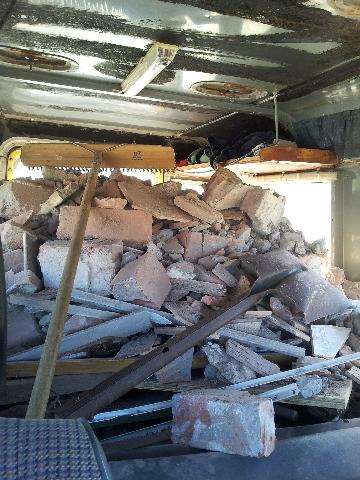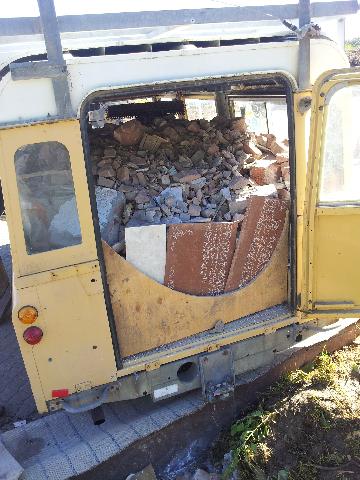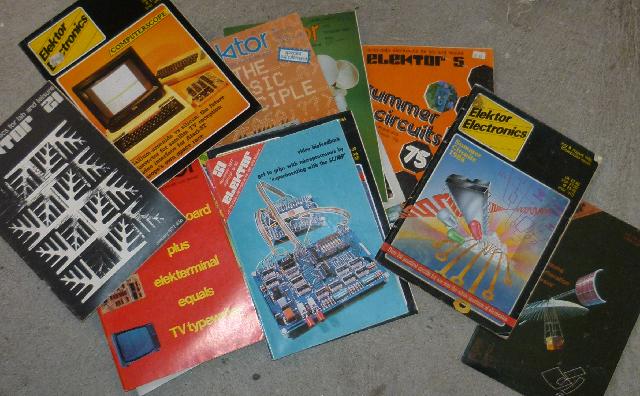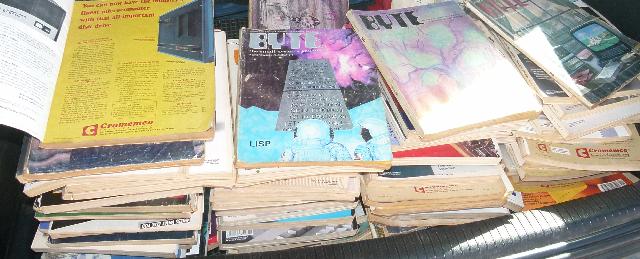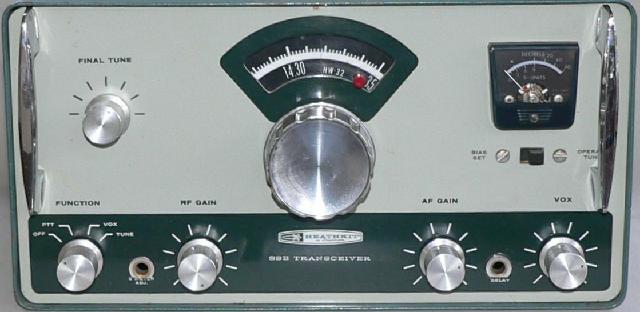Uptime
[root@mort ~]# uname -a Linux mort 2.6.6 #1 Mon May 31 12:28:13 SAST 2004 i686 unknown [root@mort ~]# uptime 08:21:51 up 900 days, 2:10, 2 users, load average: 0.21, 0.08, 0.03 [root@mort ~]#
Try that with Windows.
But they’re moving the datacentre today so that’s as high as it’s going to get for the next couple of years.
Old friends, now obsolete
Ah yes, New Years’ resolutions. Gotta love ’em.
However, I have too much stuff. There. I said it. I mean, I firmly believe in the William Morris quote, however, times have changed.
This collection of Elektor magazines I grew up with — obsolete.
A collection of GE Ham News that someone spent money on to have nicely bound — obsolete.
Byte magazines? Obsolete.
Creative Computing? Not quite yet obsolete.
And even if I can’t find it online, scanning and dumping* is better than storing the originals until my container is auctioned off one day.
Don’t get me wrong — I’m still keeping mountains of stuff. Just not… this stuff.
* Yes, Jason doesn’t like dumping. I’m not dumping anything that’s even slightly rare, so chill.
Boat Anchor
Well, almost. In Ham Speak, a boat anchor is an old, large, probably obsolete piece of radio equipment. I have more than one.
However:
The Heathkit HW-32 only qualifies if you have a tiny boat. At about 30cm wide and 15cm high, it’s actually quite small for a 14 valve transceiver rated for 200W PEP output. OK, it only does this on a single band, 20m in this case (the HW-12 and HW-22 covers 80m and 40m respectively).
Frequency coverage is 14.2 to 14.35 MHz, for mobile SSB operation. There’s no provision for CW and no coverage of the CW portion of the band.
At 5 1/2 kilos, it’s also too light to be a boat anchor — but that’s because it doesn’t have a built-in power supply. You need to supply 800V DC, 250V DC, and -130V DC bias, as well as 12V for the filaments.
We’ve come a long long way in 50 years.
Tried and tested
I made this game stew for the second time, and it was again great.
The original is from the Weg magazine and is in Afrikaans.
• 40 g dried mushrooms
• ½ cup warm stock
• 1 kg meat in 4 cm cubes. I used gemsbok.
• ½ cup flour
• 2 onions
• garlic
• 2 tablespoons brown sugar
• 2 cups stout (I used Guinness the first time and homebrew the second)
• 1 tin cherry tomatoes, drained (reserve sauce)
• 2 tablespoons Worcester
• 2 tablespoons soy
• 4 sprigs thyme
Chop the dried mushrooms and soak in hot water or stock (I added the stock powder later). Do this before prepping the meat and onions.
Coat meat with flour and brown in oil (I skipped the flour, it makes a mess and I am yet to be convinced). Keep meat warm.
Brown onion and garlic. Add sugar, add meat, fry for five minutes (I added the stock powder to the onion mix with the sugar)
Add beer, tomatoes, Worcester, soy, thyme, mushrooms.
Cook for an hour or so. Add the tomato sauce if it looks dry.
Serve with rice.
I didn’t bother with Weg’s baby onions at the end, but it sounds like a good idea.
The Sixth Stage of Grief Is Retro-computing
Moore’s law, the speed at which technology moves forward, means that the digital past gets smaller every year. So this is what is left are the tracings of hundreds of people, or thousands, who, 20, 30, 40 years ago found each other and decided to fabricate all this…digital stuff. Glittering ephemera. They left these markings and moved on.
Who wouldn’t want to go back 20 years—to drive again into the office, to sit before the whiteboard in a beanbag chair, in a place of warmth and clarity, and give it another try?
